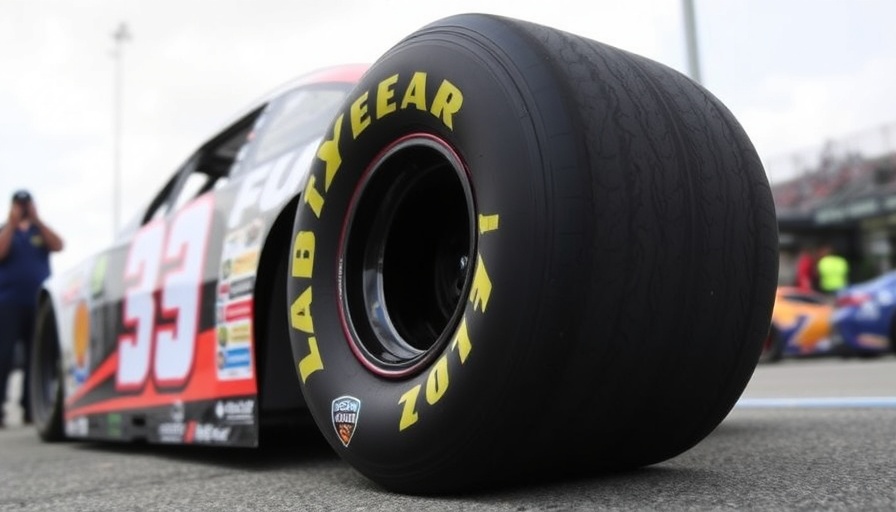
NASCAR Tire Testing: Balancing Performance and Strategy
The world of NASCAR is constantly evolving, and the recent Goodyear tire test at Charlotte Motor Speedway exemplifies this dynamic nature. Teams participated in valuable testing, refining their setups for upcoming races on similar intermediate-sized tracks. The tire testing is crucial for determining the optimal balance between grip, durability, and overall performance during the race.
Finding the Perfect Tire Balance
As teams prepare for the competitive landscape of NASCAR, the need for a well-balanced tire becomes apparent. During the Goodyear test held in Concord, NC, drivers like William Byron of Hendrick Motorsports expressed optimism about the current tire offerings for intermediate circuits. He noted, "The tire on the intermediate actually falls off pretty good... and I think the tire's in a good spot." This positive feedback indicates that recent adjustments have successfully addressed driver concerns about tire wear and performance.
The Challenges of Softer Compounds
While drivers and teams appreciated the recent changes, the shift towards softer tire compounds presents its challenges. Pilots like Ryan Blaney echoed this sentiment, emphasizing the balance needed to create a tire that provides adequate grip without the risk of blowouts. "It's a tough job for Goodyear; they have a real balancing act when making these tires. If we go too soft, we risk tire failure, leading to potential wrecks, which no one wants to see." This push for softer tires is part of a broader strategy to enhance driving dynamics on ovals, where maintaining throttle control is vital.
Understanding the Differences in Series
The recent testing session highlighted distinct differences between Cup and Xfinity Series vehicles. Drivers noted significant disparities in grip and handling, particularly in relation to downforce. Austin Hill, an Xfinity Series driver, remarked that the higher grip levels in Cup cars create unique driving experiences. "The Cup cars just have so much more grip than the Xfinity cars... they can get through the corner way faster than us. It feels different, almost as if our cars are being buffeted by the air coming from the Cup cars." Such insights provide fans with a deeper understanding of the strategic elements that come into play as different vehicles navigate the same tracks.
The Road Ahead: Incremental Improvements
As teams gathered data and feedback throughout the two-day tire testing, the objective was clear: to fine-tune their approach for the upcoming race at Homestead-Miami Speedway. With no radical changes expected from Goodyear, teams now aim to leverage their data to make incremental improvements. This approach will allow them to enhance their performance on race day, further refining their strategies and maximizing their chances of success.
NASCAR’s Test Sessions: A Rare Opportunity
In today’s NASCAR world, test sessions like this are becoming increasingly rare. The opportunity to test with a control tire, as several teams noted, is a luxury. It allows teams to analyze tire wear patterns and configure settings suited for the high-speed environment of Charlotte. Such insights have become crucial in an era where small margins can make significant differences in race outcomes.
Conclusion: Staying Ahead in NASCAR
The Goodyear tire test results are not merely numbers; they represent a complex web of strategy, engineering, and driver feedback. As NASCAR continues to evolve, these testing opportunities allow teams to remain competitive and adapt their approaches as they aim for the winner's circle. By understanding the balance of tire performance, teams are better positioned to tackle the challenges and excitement of each race ahead. For more details on the upcoming racing season, follow the updates and stay tuned for tire and vehicle performance insights!
 Add Row
Add Row  Add
Add 




Write A Comment